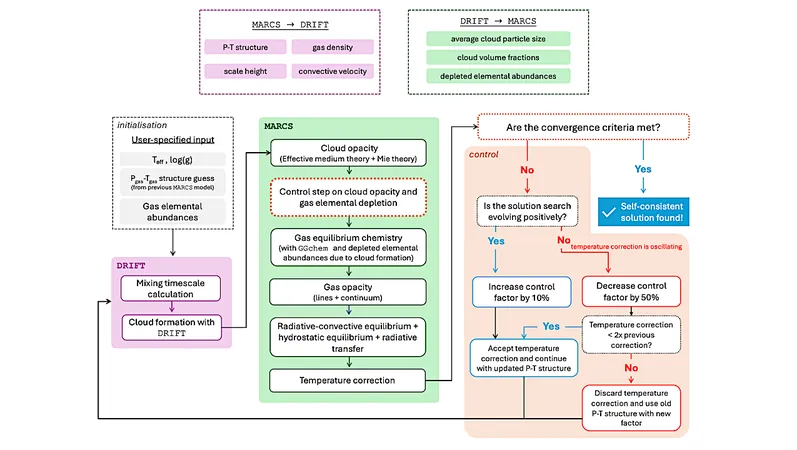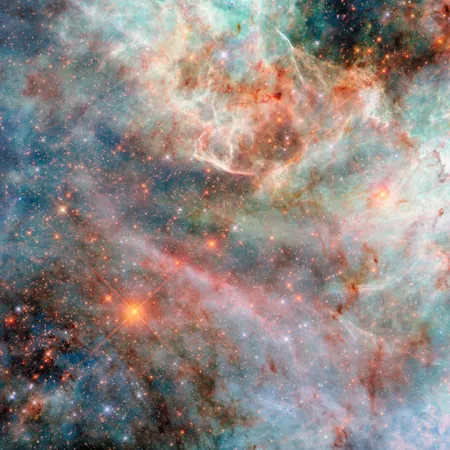
Unraveling the Mysteries of Substellar Atmospheres: The Role of Clouds and Cutting-Edge Modeling
2025-01-22
Author: Arjun
Introduction
Recent observations from the James Webb Space Telescope (JWST) are revolutionizing our understanding of substellar objects—those celestial bodies that are cooler and less massive than stars, including brown dwarfs and giant exoplanets. A key finding is the critical role that clouds play in shaping the atmospheres of these bodies, particularly seen through infrared observations.
Challenges in Atmospheric Modeling
However, current atmospheric models are facing challenges in accurately simulating the absorption features of silicate clouds around the wavelength of approximately 10 micrometers, a signature detected in these intriguing atmospheres.
The MSG Model
To address this, a new approach called the MSG model has been developed, which combines the MARCS one-dimensional radiative-convective equilibrium atmosphere model with the DRIFT (one-dimensional kinetic, stationary, non-equilibrium cloud formation) model. This fusion aims to create a new family of self-consistent models that incorporate microphysical processes involved in cloud formation, leading to more accurate atmospheric representations.
Research Objectives
The ultimate goal? To see if this innovative grid can effectively reproduce the silicate cloud absorption features detected in substellar atmospheres. The modeling focuses on atmospheres with effective temperatures ranging from 1200 to 2500 Kelvin and specific gravitational parameters (log(g)=4.0).
Advanced Modeling Techniques
By meticulously calculating atmospheric structures that account for condensate cloud opacities based on fundamental microphysical properties, researchers are employing advanced algorithms based on control theory. These techniques aim to refine and converge the self-consistent models, paving the way for synthetic atmospheric spectra that reveal the impact of the cloud microphysics under different conditions.
Nucleation Species Investigated
Moreover, the team is investigating different nucleation species—specifically Titanium Dioxide (TiO2) versus Silica (SiO)—and how these variations, along with changes in atmospheric mixing efficiency, affect the spectral outcomes. Notably, when using TiO2 for nucleation, the model predicts spectra that appear redder in the near-infrared spectrum compared to existing observations of substellar atmospheres. In contrast, models utilizing SiO nucleation and those with less efficient mixing indicate a less red appearance.
Conclusion and Future Directions
Despite these advancements, the models have not successfully reproduced the silicate features observed in recent JWST data and Spitzer archives—indicating a gap in current understanding that necessitates further investigation. Future research will likely address the implications of convection in cloud-forming regions, as well as other factors that could aid in accurately modeling these fascinating atmospheric phenomena.
Final Thoughts
Stay tuned as scientists continue to unlock the secrets of the universe, one cloud at a time!




 Brasil (PT)
Brasil (PT)
 Canada (EN)
Canada (EN)
 Chile (ES)
Chile (ES)
 Česko (CS)
Česko (CS)
 대한민국 (KO)
대한민국 (KO)
 España (ES)
España (ES)
 France (FR)
France (FR)
 Hong Kong (EN)
Hong Kong (EN)
 Italia (IT)
Italia (IT)
 日本 (JA)
日本 (JA)
 Magyarország (HU)
Magyarország (HU)
 Norge (NO)
Norge (NO)
 Polska (PL)
Polska (PL)
 Schweiz (DE)
Schweiz (DE)
 Singapore (EN)
Singapore (EN)
 Sverige (SV)
Sverige (SV)
 Suomi (FI)
Suomi (FI)
 Türkiye (TR)
Türkiye (TR)
 الإمارات العربية المتحدة (AR)
الإمارات العربية المتحدة (AR)